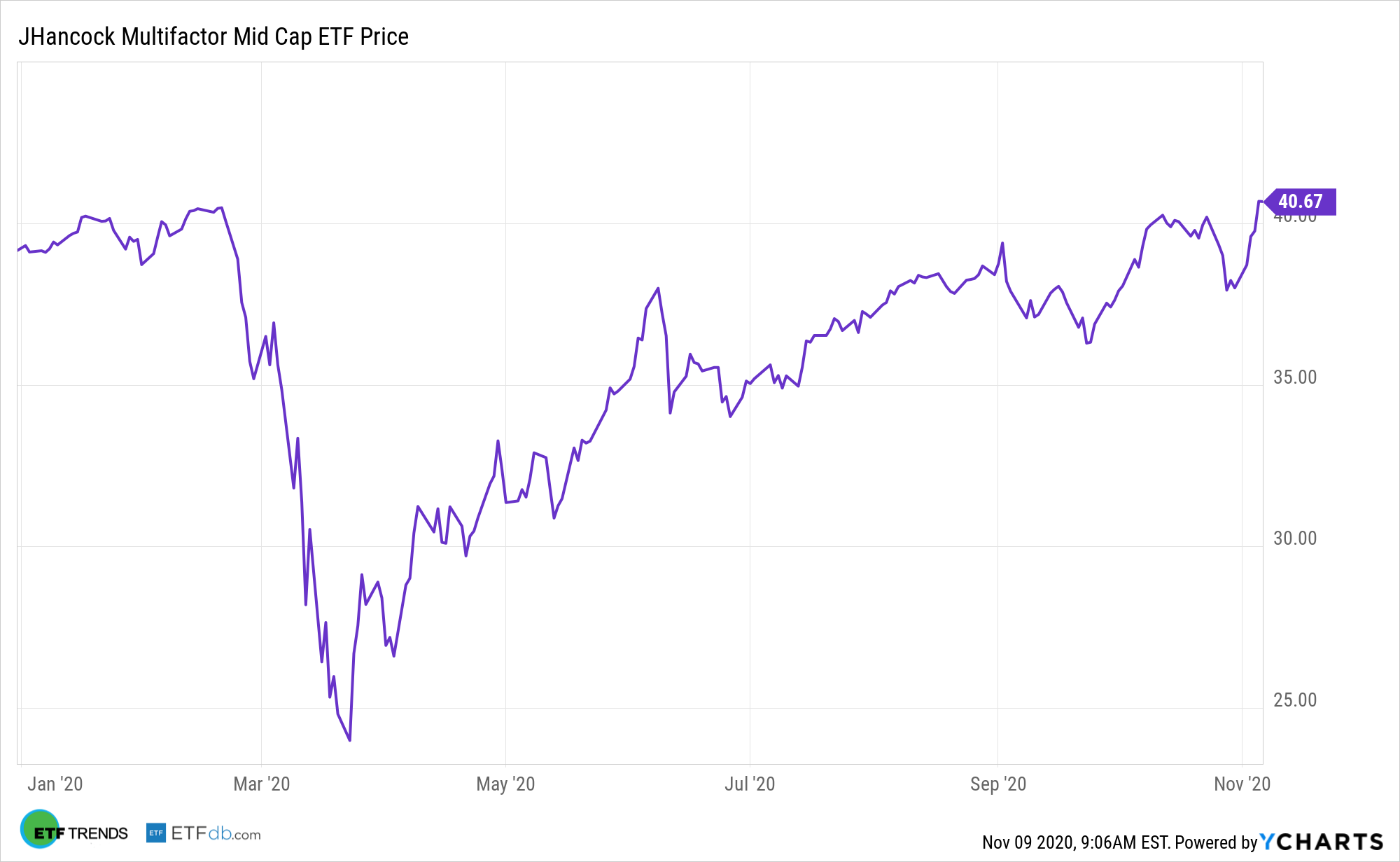Investing in mid-cap stocks has its advantages. So do multi-factor exchange traded funds. Investors can marry those concepts with the John Hancock Multifactor Mid Cap ETF (NYSEArca: JHMM).
JHMM employs a rules-based selection process that is seen as a multi-factor approach, combining a number of factors in a single portfolio. Securities are adjusted by relative price and profitability. The underlying indices may overweight stocks with lower relative prices and underweight names with higher relative prices. The indices can also adjust for profitability by overweighting stocks with higher profitability and underweighting those with lower profitability.

Some market observers note there are clear benefits with JHMM’s strategy.
“The resulting portfolio has noticeable tilts toward smaller and more-profitable stocks than the Russell Midcap Index, but its value tilt is less pronounced,” writes Morningstar analyst Ryan Jackson. “The quality focus is the primary culprit, as very cheap stocks tend to rank poorly in profitability metrics. This is a worthy trade-off. Mild value exposure is a fair price to pay to avoid stocks whose low profitability makes them unlikely to deliver strong returns.”
A Jump for JHMM: More on the Fund
Mid-cap companies are slightly more diversified than their small-cap peers, which allows many mid-sized companies to generate more consistent revenue and cash flow, along with more stable stock prices. Additionally, they are not so big that their size would slow down growth. Increased mergers and acquisitions activity could be just what mid-caps need to catch up to large- and small-cap stocks.
JHMM “sweeps in a wide range of mid-cap stocks, so firm-specific risk is not a concern,” notes Jackson. “Neither is sector risk, as this fund evaluates firms’ value and profitability traits on a sector-relative basis, yielding a portfolio whose sector composition matches the Russell Midcap Index. This fund has exhibited more volatility than the Russell Midcap since its 2015 inception, which is a function of its smaller market-cap orientation compared with the index.”
Historical data indicate that even modest allocations to mid-cap stocks can improve long-term returns compared to portfolios that don’t feature mid-cap exposure.
JHMM’s “integrated approach has produced solid exposure to the quality and small-size factors. For example, its return on assets–a measure of profitability–comfortably exceeds that of the Russell Midcap Index. This fund’s small-size tilt is milder but consistent. The average market-cap of this fund’s holdings has hovered about $2 billion lower than the Russell Midcap since this fund’s inception. Value has not emerged the same way. Measures like price/book and price/earnings indicate a very similar value-growth orientation for this fund and the Russell Midcap Index,” according to Jackson.
For more on multi-factor strategies, visit our Multi-Factor Channel.
The opinions and forecasts expressed herein are solely those of Tom Lydon, and may not actually come to pass. Information on this site should not be used or construed as an offer to sell, a solicitation of an offer to buy, or a recommendation for any product.

